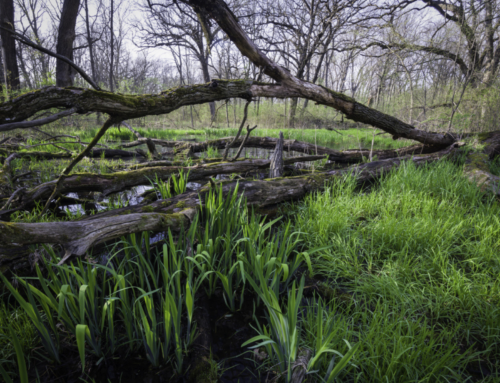December 6, 2018
Wayne Ives, Instream Flow Specialist
Dept. of Environmental Services
29 Hazen Drive; P.O. Box 95
Concord, NH 03302-0095
Wayne.Ives@des.nh.gov
Re: Instream Flow Program River Prioritization
Mr. Ives,
The Connecticut River Watershed Council, Inc. (CRWC), now doing business as the Connecticut River Conservancy (CRC), is a nonprofit citizen group established in 1952 to advocate for the protection, restoration, and sustainable use of the Connecticut River and its four-state watershed. We appreciate the opportunity to provide the following comments for the Instream Flow Program’s prioritization scheme.
In theory we support the method that resulted in the proposed NH DES ranking. We appreciate your hard work on this daunting task and the inclusion of two Connecticut River tributaries, the Cold River and upper Ashuelot in the next set of priority waterways.
We note that it seems from the prioritization process that even though the Connecticut River is the largest river in the state, and it has been a Designated River since 1992, it is not being considered for ranking at all. It was not segmented based on target fish communities and not ranked for gage information or development pressure. The Connecticut has gages, development pressure, and a very comprehensive and active Local Advisory Committee in the form of the Connecticut River Joint Commission (CRJC) and the CRJC subcommittees. CRC would argue that as part of this vetting process, the Connecticut River should be segmented via some logical scheme[i] and evaluated with the same standards applied to the other Designated Rivers. By excluding the Connecticut River from the prioritization process, NH DES is violating the intent of RSA483:9 (I)[ii].
In regard to the consideration of a cost-effective use of funds, the instream flow analysis might be easier to do on a river that is so heavily regulated. A great deal of instream flow analysis has been done for both the relicensing of 15 Miles Falls hydro-electric projects in 2002 and the current relicensing of the Wilder, Bellows Falls and Vernon projects[iii]. It would seem logical that this volume of information would inform the instream flow analysis.
In general, we would argue that for any Designated River that has a FERC licensed dam, the time to do the instream flow analysis is during the relicensing process in order to correctly issue a 401 certificate. We understand that the NH DES available budget is a consideration in the prioritization process. Studies required during the relicensing process will contribute to the data collection and analysis which may reduce the budgetary burden on the state.
Additionally, for the Connecticut in particular, much instream flow analysis has been done through the Connecticut River Flow Restoration Study[iv]. For instance, one model utilized for analysis in this study was The Connecticut River Unimpaired Streamflow Estimator (CRUISE), a model developed by the U.S. Geological Survey to estimate unimpaired streamflow at any perennial stream location within the Connecticut River watershed. This reference model is already in place and NH DES could take advantage of this in the instream flow analysis of the Connecticut River, and possibly other NH rivers located in the watershed.
We understand that the Connecticut River adds a level of complexity in the prioritization process due to its interstate nature, volume of water, level of regulation, and migratory species. If the Connecticut River is too unwieldy for the Instream Flow Program as currently designed, then the NH DES needs to consider a different process altogether for how the Instream Flow Program would be applied to the Connecticut River under RSA483. As indicated in the Report of the Instream Flow Pilot Program[v],
“New Hampshire shares several waterbodies with its neighboring states. This condition may create an inequity to water users withdrawing from the New Hampshire side of interstate waters. The establishment of consistent authorities to regulate the withdrawal of water from interstate waters by users located in neighboring states would require a coordinated response. This situation has been discussed in a report to the Connecticut River Joint Commission and at the Commission’s Flow Policy Conference for the Upper Connecticut River Watershed held on June 30, 1999. One suggestion proposed that the Connecticut River watershed be used as a pilot project for development of an interstate flow policy under the framework of the Clean Water Act (Water Quality Certification) and the New England Interstate Water Pollution Control Commission. Such a policy could develop watershed-specific flow standards which would be incorporated into each state’s water quality standards.”
If the NH DES feels that the Connecticut River can not be integrated into the current prioritization scheme, CRC encourages NH DES to begin this suggested pilot project for the development of an interstate flow policy.
Connecticut River Conservancy greatly appreciates the opportunity to comment.
Sincerely,
Kathy Urffer
River Steward
Cc: Connecticut River Joint Commissions
[i] The assumption that upstream sections of the river is of highest concern may not apply to rivers that support migratory fish. Targeted fish community inventories should designate what section of the river is of highest priority. Certainly endangered species consideration should outweigh the possible inconvenience of having to revisit a watershed management plan.
[ii] RSA483:9 (I) , “The commissioner, in consultation with the advisory committee, shall adopt rules under RSA 541-A specifying the standards, criteria, and procedures by which protected instream flows shall be established and enforced for each designated river or segment.”
[iii] See: http://www.greatriverhydro-relicensing.com/
[iv] Kennedy, K., K. Lutz, C. Hatfield, L. Martin, T. Barker, R. Palmer, L. Detwiler, J. Anleitner, J. Hickey. 2018. The Connecticut River Flow Restoration Study: A watershed-scale assessment of the potential for flow restoration through dam re-operation. The Nature Conservancy, U.S. Army Corps of Engineers, and University of Massachusetts Amherst. Northampton, MA. Available: http://nature.org/ctriverwatershed
[v] New Hampshire Department of Environmental Services, Water Division. 2015. Report of the Instream Flow Pilot Program. Concord. Available: https://www.des.nh.gov/organization/divisions/water/wmb/rivers/instream/report.htm.







